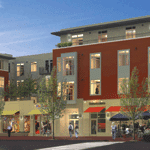
Art Klipfel and Gwendolen Noyes
Gwendolen Noyes and Arthur Klipfel put their money where their housing is. They still live in the factory-built, urban-infill housing community they designed and developed in 1998. As cofounders of Oaktree Development and both trained architects, Noyes and Klipfel have created sustainable, multifamily, transit-oriented developments in or near Boston for more than 40 years. Today, they are using their patented GreenStaxx building system to further increase efficiency in the design-build process.
gb&d: What in your backgrounds brought both of you to green building?
Arthur Klipfel: Coming from a small town in Ohio in multifamily housing, I had a real distaste for urban sprawl.
Gwendolen Noyes: As a young girl, I lived on an organic farm. I spent a lot of time just drawing site plans for agriculture communities. Eventually I went to the University of Pennsylvania School of Architecture and studied with Ian McHarg, who wrote Design With Nature. He was big at Penn.
gb&d: How does your overall design intersect with your life philosophies?
Klipfel: I graduated from Yale in 1965 with an undergraduate degree in economics. My love of the downtown and a desire to make things affordable got me into multifamily housing.
Noyes: We can’t parse out different parts of our lives and say, “Now I’m going to be an environmentalist.” It’s all one thing. I’ve been a Quaker for the past 40 years, and doing things simply, in unity with nature, has been a priority for as long as I can remember.
gb&d: Can you explain your GreenStaxx system?
Klipfel: To reduce the complexity of the design-build process, we’ve created stacks of units that represent different parts of the building. They go together like LEGO blocks. We take a specific site and lay a grid down that fits the site and metrics of the blocks, and then arrange the grid so you can put in different units.
gb&d: What’s the benefit?
Klipfel: They are completely pre-engineered. When you put that block in place you already have the dimensions, specifications, and the supply chain. The green is baked in.
Noyes: This whole system is the heart of what we’re doing. It adapts well to infill housing because it can work with an existing infrastructure and at any scale.
gb&d: What sort of influence have you had on each other professionally?
Klipfel: She’s had a great passion for green, and I share that. I think my contribution to our partnership has been on the design and economic level.
Noyes: Art has an economics background, and he is always paying attention to how the bottom line also shapes a building.

Oaktree Development used its GreenStaxx system on Chelsea Place, a LEED Silver, four-story, 56-unit development in Chelsea, MA.
gb&d: You always design to LEED standards—do you look beyond that criteria?
Klipfel: We actually made a trip to Vienna to meet some of the Passive House people there. Our principal designer in our office passed her exam, and we’re very pleased about that because it’s not easy.
Noyes: The Passive House standard is the Holy Grail. Because of the market discipline that we must work within, we look at working with it as pushing the “state of the shelf” rather than the state of the art.
gb&d: Are there any projects in your portfolio you’re particularly proud of?
Klipfel: In the ’80s, we built a 175-unit project in a blighted area. It was right next to the Green Line station downtown [in Cambridge] and along a canal. It triggered a federal grant to upgrade the canal into something that today is one of the hot spots in Cambridge.
Noyes: We’re now in the process of getting the building permit for a project that will have every green, smart-growth bell and whistle you can imagine. We just completed another building under the auspices of a state program to encourage affordable housing in downtown areas, and they have trumpeted this project as their poster child for the program.
Klipfel: The state’s idea was to increase housing density in exchange for more affordability.
gb&d: What sets you apart from other green designers?
Noyes: We push the design/sociology edge of the box. One of the things our buildings can do is relocate wellness and preventative healthcare into a place where people live.
Klipfel: It’s not just a mechanical product—it’s a lifestyle we’re developing.
gb&d: What do you think will be the lasting impact of your work?
Noyes: One thing that gives me the most pleasure is to go back and visit some of the buildings that we developed 34 years ago and see that they have not only been durable, but they’ve also blossomed to foster vibrant neighborhood communities.

